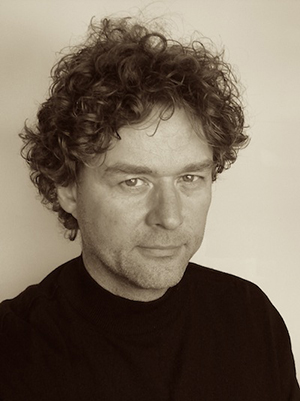– Storytelling and communication are central to the humanities. Therefore it is also important to explore and understand how new technology can promote dissemination and create new narrative forms, says Professor Gunnar Liestøl from the Department of Media and Communication.
For several years, Liestøl has led the research project "Situated Simulations" – also known as "SitsimLab". The researchers have developed a technology that makes geographic simulation possible. This means that we can download an app designed for a particular geographical location and while we are there, we can see the three-dimensional animations that have been recreated for the location.
– The digital technology has long since grown out of the hands of computer scientists and into the core areas of the humanities. We need to be ready to seize the opportunities in a constructive manner, says Liestøl.
Experience D-day
And that is exactly what Liestøl and his programmers at SitsimLab have done. Through complicated algorithms, our mobile phones can tell a story based on the location of the user. With advanced graphics and simulated remote-controlled point of view in all directions, we can recreate and explore the Roman Forum in Rome or the Parthenon in Athens. Last year, Liestøl launched a new app that portrays D-day on Omaha Beach.
The apps have been a success and had several thousand downloads. And they appear to have had an impact in several fields. But, in fact, they are only side effects of research work that is essentially about humanistic meaning and narrative.
Liestøl is a media specialist with a background in literature, and it is the literary science that has brought him into this digital world, which may seem a bit humanistic, even to his immediate colleagues. Based on rhetoric and narrative technique, he was already in 1990 one of the first to start incorporating digital media in his research, a year before the World Wide Web was launched.
Through a partnership with the Kon Tiki Museum here in Oslo, Liestøl developed and experimented with multi media communication in the form of an innovative kiosk system (later CD and WWW) with non-linear video. Liestøl has continued to develop further the potential of humanistic informed media design, and since the NFR project INVENTIO was launched in 2006, he has experimented with location based media. Today, the project receives funding from participation in two newly-initiated EU-projects.
The actual project

– The various apps are in fact designed to test different dissemination models and narrative techniques, inspired by humanistic dissemination traditions, which form the basis of the designs. I do not sell them and they are not the end products of my research. My research is something else, says Liestøl. The ambition behind all this is twofold, he adds:
– I want to develop a humanistic design methodology, ways of creating innovation in digital technology that are based on the tradition of Cicero. What we humanists do know about is the meaning of the communication. We must create conditions and not just be critical thinkers. Finally, I also have an ambition to develop theory and new concepts for this field, so that what I and my research team discover and explore will eventually be described and understood better, both by myself and by others.
– So my project is actually something completely different from these apps. But it is nice when the byproducts of humanistic research can have a significance for many people, he says.
The research project and app development are conducted in close collaboration with Tomas Stenarson of CodeGrind AB and Šarūnas Ledas from Tag of Joy.